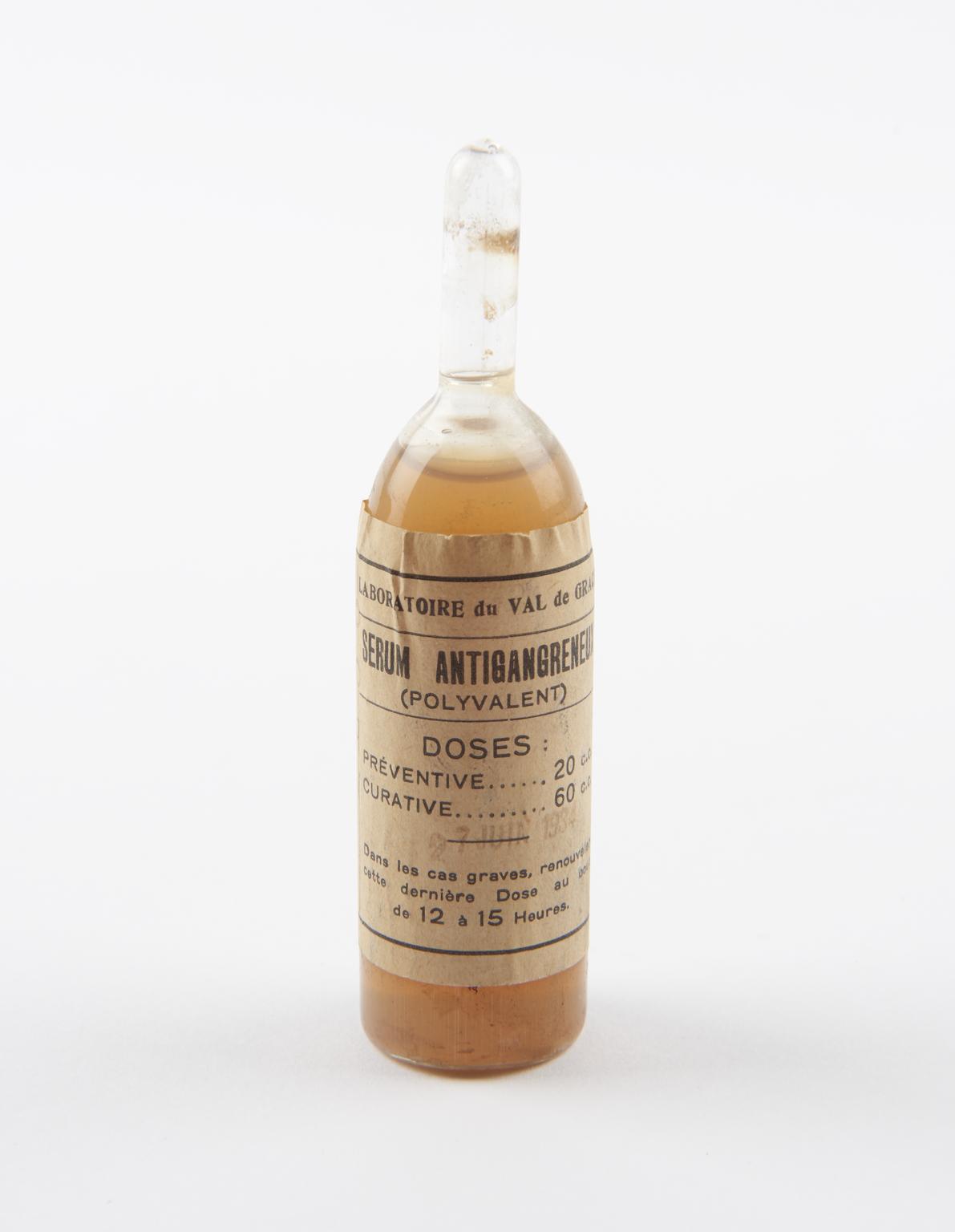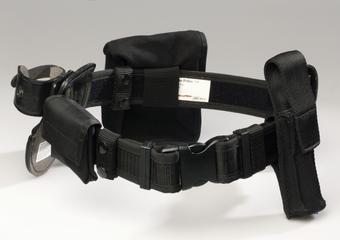
Ampoule of Anti Gas-Gangrene Serum
Single glass ampoule, one of four, of gas-gangrene serum, by Laboratoire due Val de Grace, French, 1934
More
Gas gangrene is an infection caused by bacteria in soil finding its way into wounds that have not been cleaned properly. As the flesh and tissue decay a foul smelling gas is given off. This ampoule of serum contains antibodies from an animal infected with the disease. Injected into a patient, this serum was used to prevent or cure the infection. Treatment today is usually by antibiotics, and surgery to remove the dead and infected tissue to prevent further spread of the bacteria. The infection was an especially feared complication of wounds in the First World War. Gangrene was often fatal before the introduction of antibiotics in the 1940s.
- Measurements:
-
overall: 95 mm 21 mm, 0.03 kg
- Materials:
- glass
- Object Number:
- A629772 Pt2
- type:
- immune serum
- Image ©
- The Board of Trustees of the Science Museum











